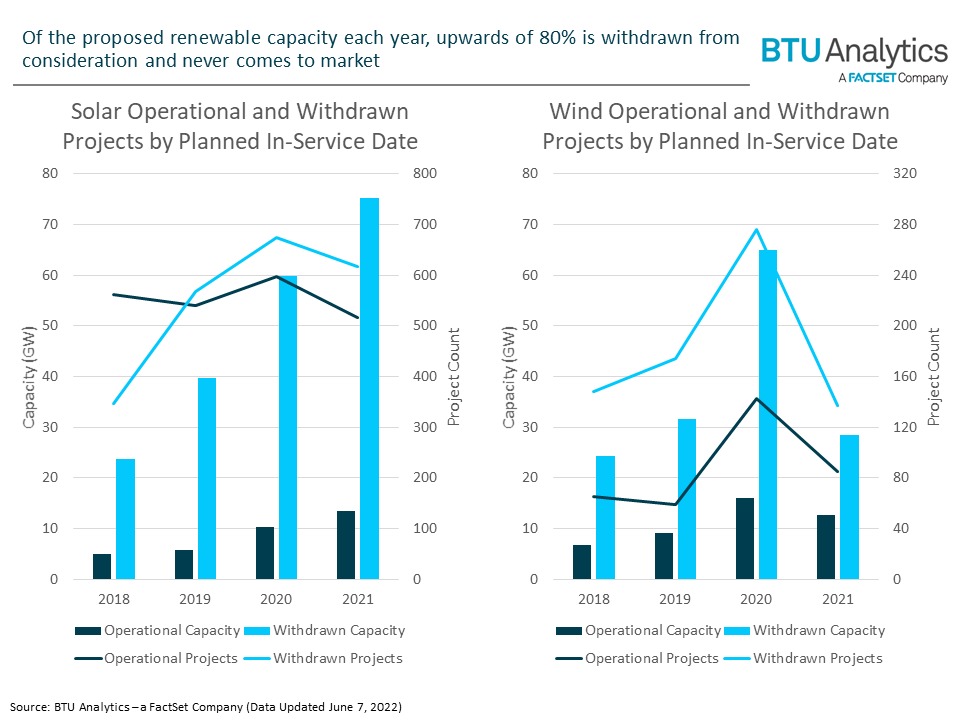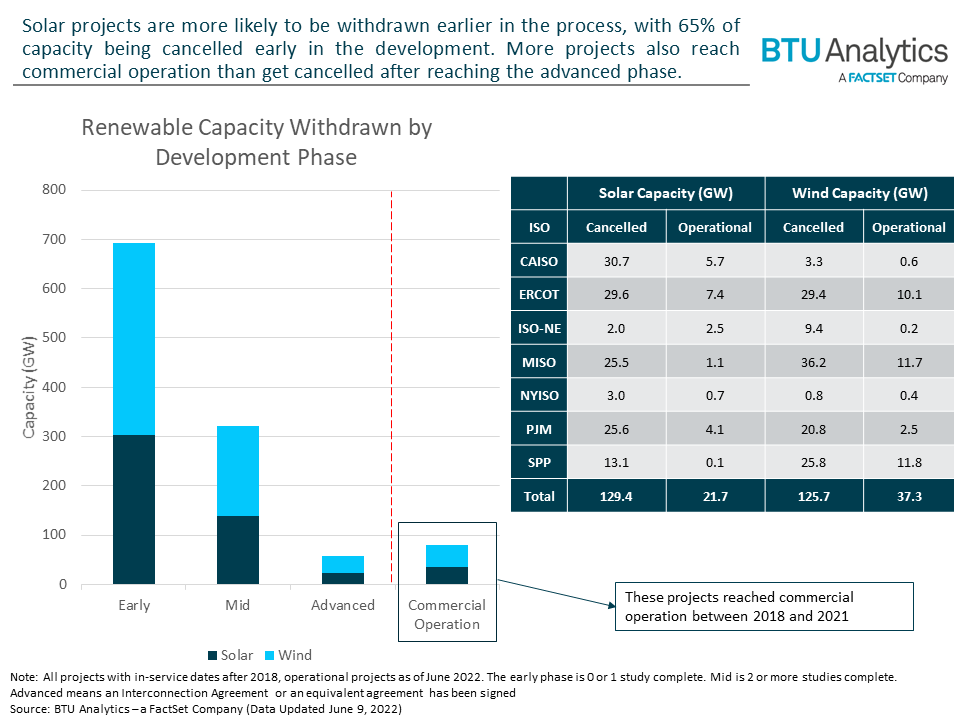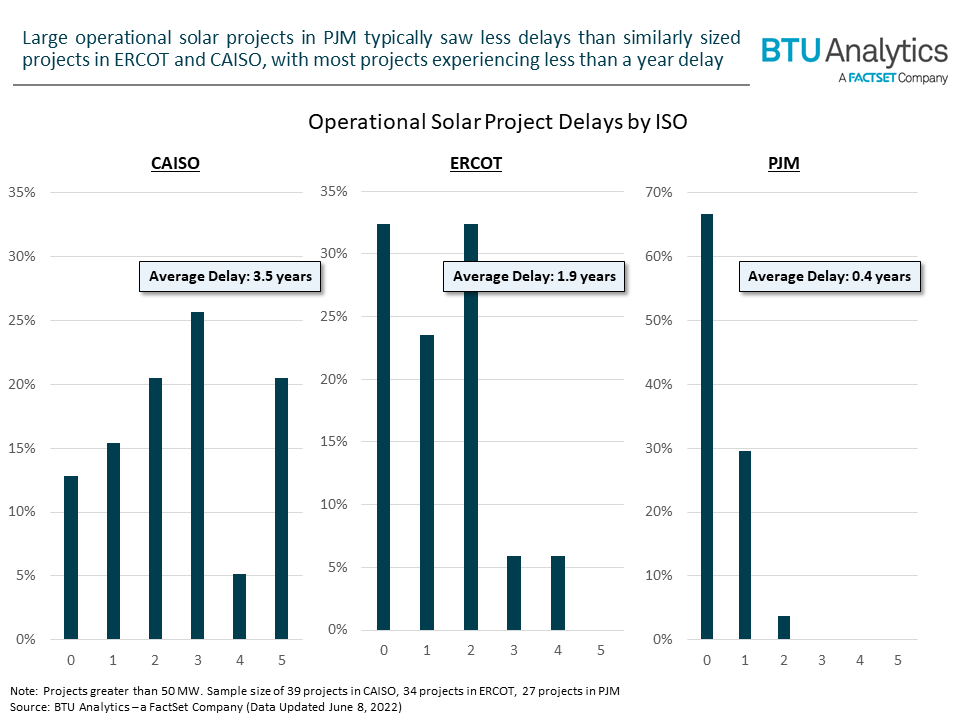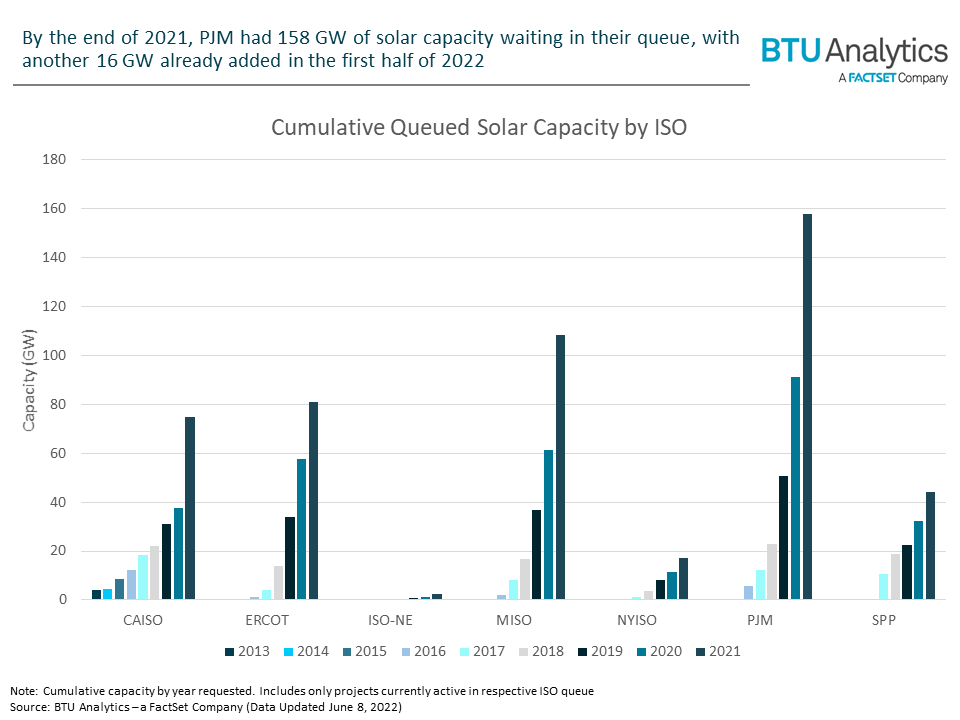Earlier this week, the Biden Administration announced plans for a 24-month tariff exemption for solar panels from Cambodia, Malaysia, Thailand, and Vietnam. This came as welcome news to the solar industry, as many projects were going to be facing risk of delay or cancellation due to the solar anti-dumping investigation, which aggravated already stressed supply chains. However, renewable projects being delayed and cancelled is nothing new. Today’s Energy Market Insight will examine renewable project cancellations and the delays of currently operational solar projects.
Grid operators across the U.S. have their own generation interconnection queues, where new generation projects are studied to determine their impact to the grid as well as any mitigation measures that must be taken. Looking back at the queues over the past few years, there was 194 GW of wind capacity and 233 GW of solar capacity with proposed in-service dates set between 2018 and 2021. However, 75% of wind capacity (150 GW) and 85% of solar capacity (199 GW) were subsequently withdrawn from their respective queues.

Some of these cancellations were the result of specific feedback, such as the grid operator giving interconnection costs that were higher than initial expectations and local opposition or regulatory bodies pushing back against the project. Withdrawing a project’s application for these reasons typically takes place far into the interconnection queue process. However, as shown below, approximately 65% of wind and solar projects are withdrawn at early stages of the process.

In this context, the early phase of the development process is where a project has gone through one interconnection study, at most, with some projects not even completing the first study. Projects typically exit the queue this early on because the farther in the process a project proceeds, the more expensive the process becomes. Additionally, some developers may file multiple interconnections for a single project to maintain future optionality. When one point of interconnection is deemed to be more beneficial, the developer will cancel or not pursue the duplicative applications.
While many projects get withdrawn, ERCOT, CAISO, and PJM brought online over 4 GW each of new solar capacity between 2018 and 2021. However, while these projects were not cancelled, they were still at risk of being delayed, as shown in the graphic below.

Projects within CAISO and ERCOT typically saw long delays for solar projects, with CAISO requiring an average delay of 3.5 years and ERCOT seeing delays of 1.9 years. PJM faired far better, with an average delay time of only 0.4 years for solar projects greater than 50 MW. Still, this picture is at risk of changing, as PJM is now outpacing every other ISO with the most active solar applications under study or waiting to be studied.

With 158 GW of solar in the queue, PJM far outpaces every other ISO, and this current backlog is only going to get worse, as 16 GW of solar has already entered the queue in 2022. PJM did not design their queue process to deal with this number of projects, so they have proposed new interconnection queue reforms to FERC to help them speed up their process. These reforms focus on implementing cluster studies and prioritizing projects submitted before 2021.
With President Biden’s executive order (and assuming implementation from the Department of Commerce), solar developers can take a sigh of relief, knowing that they will be protected from retroactive tariffs. However, even at the best of times, renewable projects face the risk of delay and cancellation. With thermal assets being pushed to retire quickly, uncertainty in the timing of new capacity puts grid reliability at risk. Grid operators will be put to the test this summer and subsequent ones, as they struggle to backfill retiring capacity in the face of project delays. We will explore resource adequacy, or lack thereof, around the country in future Insights.









